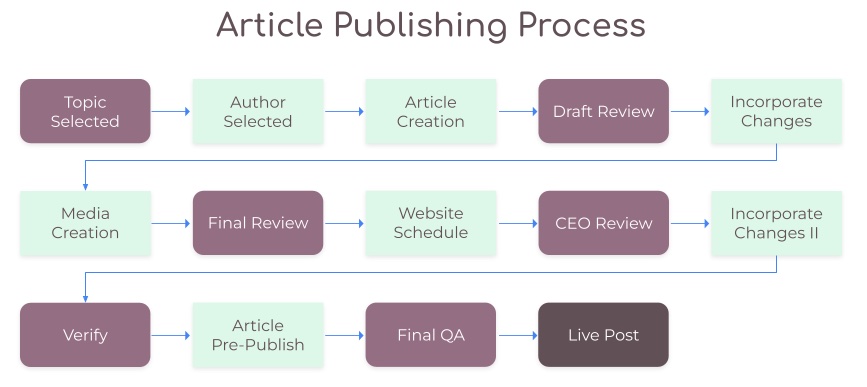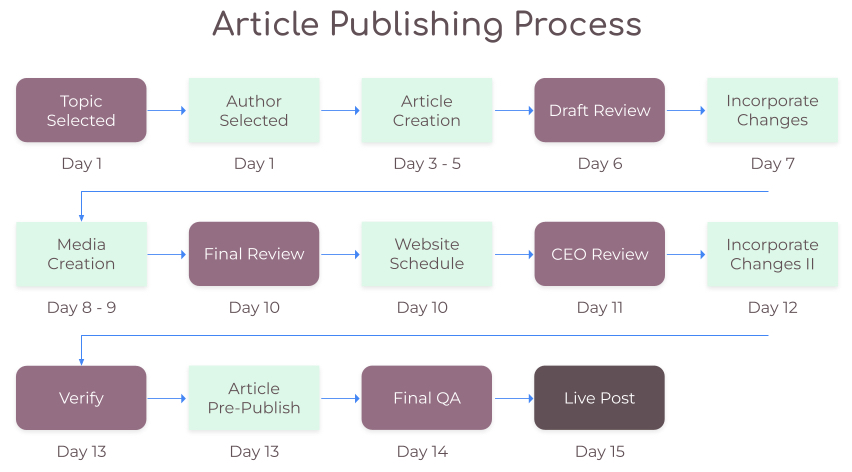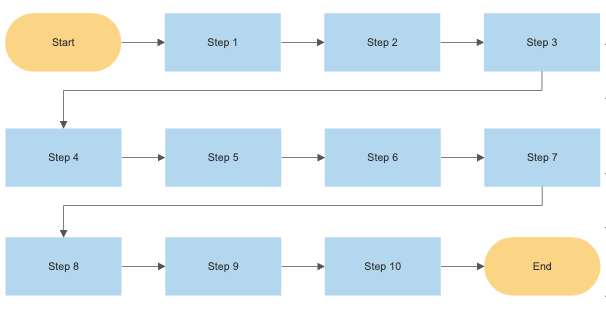Helping Teams Perform:
Resolving Conflict with Workflows
Helping Teams Perform:
Resolving Conflict
with Workflows
“You’re just getting this to me now? I have a hundred other things to do today,” was shouted down the hall, coming from the CEO’s office.
The reaction was to an email request from our Marketing Director, to review several articles slated to go on the website within the next few days.
I was told these interactions were common, but this was my first time witnessing it live. I had recently joined the company – which ran a popular blog – to help build our customer base and align the team to take on the challenge. I saw this as one of those challenges and an opportunity to get involved and help.
Workflows are effective tools that get very little love.
Workflows are an effective tool that gets very little love. If you’re not familiar, I hope to provide insights into how they can be used to not only establish business processes (feeling sleepy?) but more importantly, to identify and address conflict.
I’m going to stick to the people side of workflows. There are many great sources on the technical application of workflows (I list a few below). I want to focus on how they can help people understand each other’s needs, get along, and perform better.
I won’t get into the components of the flowchart; symbols, colors, etc. I’d like to focus on what the diagram represents because a lot goes into its creation. Done correctly, difficult discussions took place, tough decisions were made, and everyone involved had a chance to weigh in. The diagram plainly displays the necessary steps, and everyone can now rely on the tool to follow the formalized process.
When formalizing a process,
compromise should be everyone's goal.
A challenging aspect of life, let alone business, is meeting others’ expectations within reality. When attempting to formalize a process with a bunch of people, compromise should be everyone’s goal.
So how do we get there?
Back to the article reviews:
There was a noticeable prickliness between the CEO and Marketing Director, and I was curious why. Remembering Adam Grant’s research on the types of conflict, task versus relationship, I wondered which type was occurring and if there was a way to alleviate the friction.
I learned the CEO was just notified of the timetable, and although it was important to get the reviews done, had competing priorities. I could understand the frustration and wondered how the situation came to be – it wasn’t the first time – and if the process was causing the issues. I asked if I could chat about it with each and propose some next steps.
While the Marketing Director walked me through the article creation process, I noted each activity, review, and handoff. There were many steps involved, and to be sure I captured everything correctly, I proposed creating a visual the three of us could review and discuss together.
Here is the visual I used for our discussion:

During the group session, we reviewed each step in the visual, describing what takes place and who is involved. My role was not to lead the discussion but identify any ambiguities and ask open-ended questions, especially when either was responsible for specific activities. By the end, all steps had been identified, ordered, and approved – compromise and agreement were happening!
I made sure to comment on what we had just accomplished – an approved step-by-step visualization of the process – and that ending on a positive note would get us to the ultimate goal. We had a few more details to finalize.
The step-by-step visual was great, but it didn’t yet depict reality. We needed a time component that measures from step 1 to a published article on the site.
After talking with the Marketing Manager about the business-days each step takes place, I updated and shared the diagram:

With the days* added to each of the steps, everyone could see the calendar time required to complete an article. We all were surprised by the 15-business day timetable. Reality was setting in.
Going through this process was eye-opening for everyone, and in the end, our CEO had a better understanding of the complexities of getting to the review step, and the Marketing Director could see more accurately when to schedule reviews for the CEO.
We formalized a 14-step workflow within the organization, equipping everyone with a tool to guide them through the process. We used software to show everyone which step each article was in, and a calendar to block out time for upcoming reviews – 3 to 5 days in advance.
Can it solve all our conflict?
While there were a few surprises, going through the workflow process brought to light some assumptions; only natural when reference or context is lacking. As a result of this exercise, understandings were clarified, expectations set, and most importantly, relationships strengthened.
Can this solve all our conflict? Absolutely not. Workflow creation helps get on the same page with others or shows some of the realities some may not see, but it’s up to the people involved to apply the plan to reality.
As with any process meant to create something worthwhile and beneficial, there are circumstances outside of our control. How we react to those determines whether it’s successful or not.
That said, it’s a great tool to help people work on their relationships.
Sources for for more Workflow and Flowchart details:
- SmartDraw.com – quick-start templates from flowcharts to floor plans.
- Lucid.co – Lucid Chart professional diagram software.
- Workflow defined – PNMsoft (YouTube video)
* We mention “With the days* added to each of the steps,” in the article. What’s meant by this is the number of calendar days into the process timeline the activity takes place. In this case, if everything went as planned, an article would take 15 business days (Mon – Fri) to complete the cycle. When creating the timeline, we included some ‘slack’ to account for the unknown delays or changes that exist with every article created, but differ from article to article – some would take less time, but the goal is that no article take more than 15 business days to identify and publish.
After the initial setup, we worked to decrease the formalized timeline, while accounting for many articles in development at any given time. We also created a contingency plan for articles that focused on time-sensitive topics.
